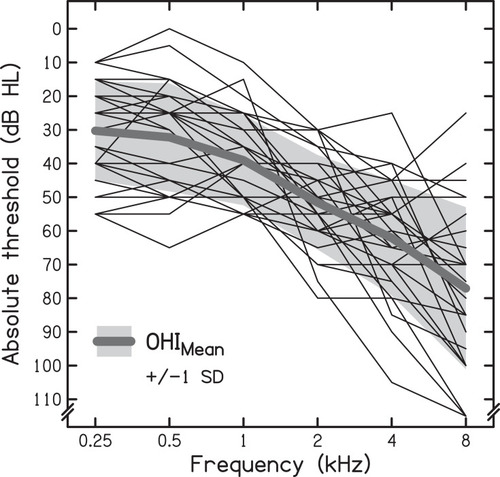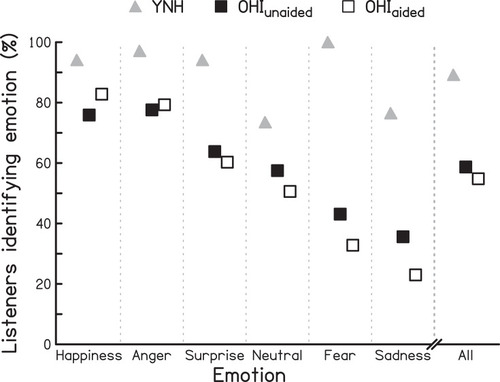Figures & data
Figure 1 Individual (thin lines) and mean (thick line) audiograms for the better ear of the 29 older-adult hearing-impaired (OHI) listeners. The grey-shaded area represents ±1 standard deviation (SD).

Figure 2 Percentage of listeners correctly identifying each of the six emotional states, and percentage of correct identification across all emotional states (All) for the YNH listeners, and the OHI listeners when unaided (OHIunaided) and when aided through their own bilateral HAs (OHIaided). The emotional states are presented, from left to right, in order of the size of the impact of the HAs on emotion perception in the OHI listeners.

Table 1 Correlations Between Each of the Listener-Related Factors of Age, PTA, and Self-Adjusted Presentation Level and Verbal-Emotion-Perception Performance in the Unaided and Aided Listening Conditions
